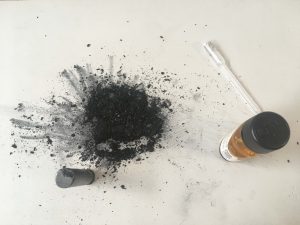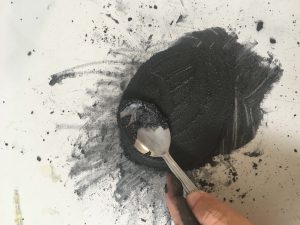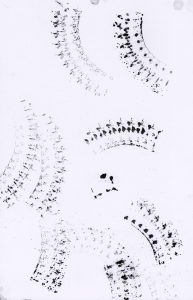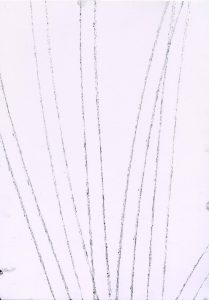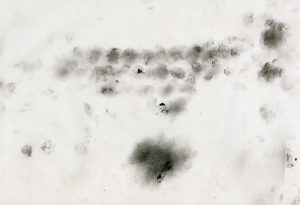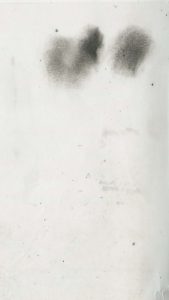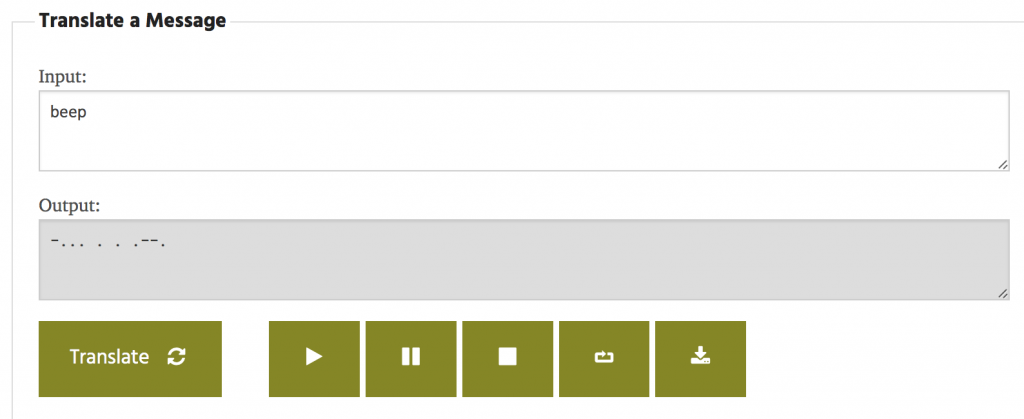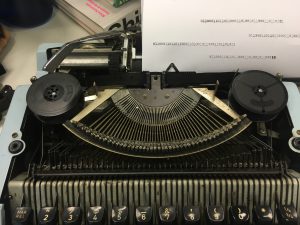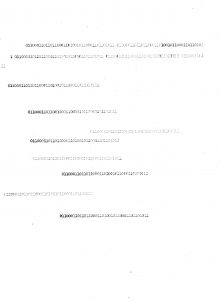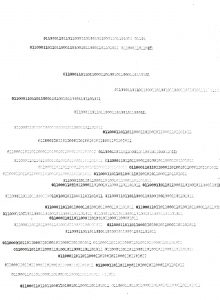Machine-Made
(Mechanical) Machines Selected : [ Wind-up Train | Wind-up Robot | Typewriter | Alarm Clock ]
(Electronic) Machines Selected : [ Macbook Pro | Computer Mouse | EPSON Scanner | HP Printer ]
Medium #1 (Charcoal + Oil)
Initially I wanted to use crayons for the medium, This is mostly because I wanted to utilise the usage of the microwave oven as a tool to create the pattern. However, my outcome was far from satisfaction. Moreover, the use of colours for the crayon did not resonate with me. I have since scrapped the usage of microwave oven for my pattern.
I decide to look back at the concept as a whole. I realised that the utility of mechanical and electronic machines can be classified according a timeline of each inventions. As I began to look back, I traced back the inventions to the period of Industrial Revolution. Naturally, I thought about ‘coal-carrying’ steam trains and inventions of manufacturing greased-up robotic machines.
Thus, I chose charcoal and oil to be one of my mediums.
Exploration #1 (Wind-up toys)
I looked at Youtube to see how I can utilise charcoal and oil to be my medium.
Trying out:
Following the Youtube tutorial, I crushed charcoal and mixed danish oil in slowly until I got a pretty good consistency. (Initially I added linseed oil, which turned out to be too thick and resulted in a clump of wasted charcoal)
Testing:
Making use of the wind-up mechanism, I used a wind-up train and a wind-up robot to create the first series of pattern.
The results were fairly acceptable. The generated patterns are as follows:
Exploration #2 (Keyboard and Mouse )
Whilst creating the first composition, my hands were stained with charcoal and oil. I decided to utilise the scenario and placed a tracing paper on my Macbook keyboard and Mouse. Therefore while using the Macbook, I was creating more patterns.
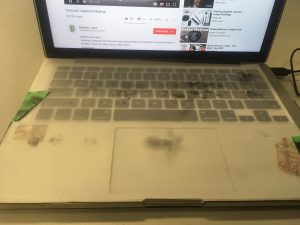
Results were as follow:
An interesting observation is that I made use of the backspace button a lot. Anyway the resulted motif may be difficult to incorporate into the pattern.
Status: Archived
Medium #2 (Typewriter | Macbook Pro)
I am intrigued with the parallels between Morse Code and Binary Code. The mechanical language of the morse code versus the digital language of the binary code. I decided to invert the creation of both languages with the opposite tool.
Thus, I made use of the mechanical typewriter to create the binary code of the word “beep” and I used the laptop to create the morse code of the word “click”.
First, I translated both morse code and binary code through the use of generator.
Testing:
Results were as follow:
(More motifs exploration in the next post)
To be continued.
